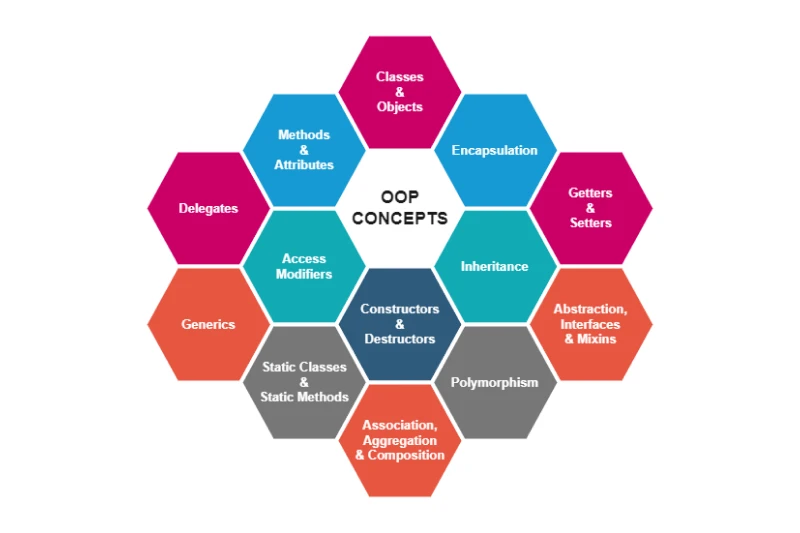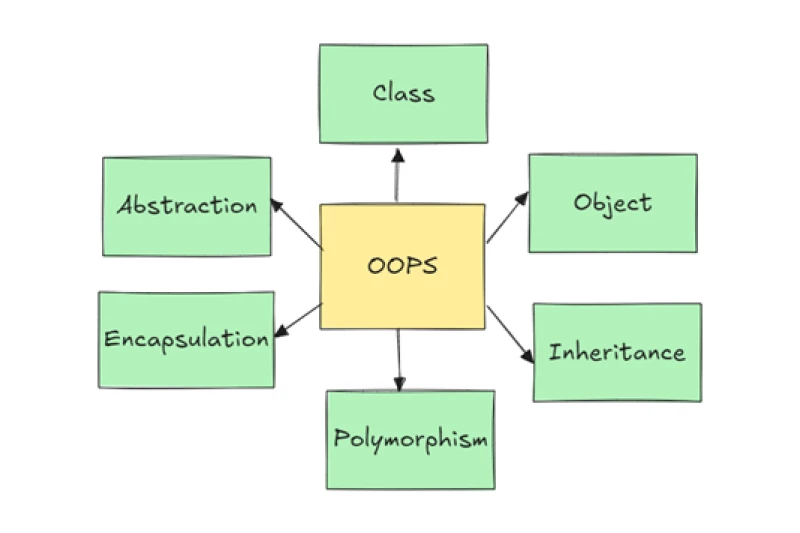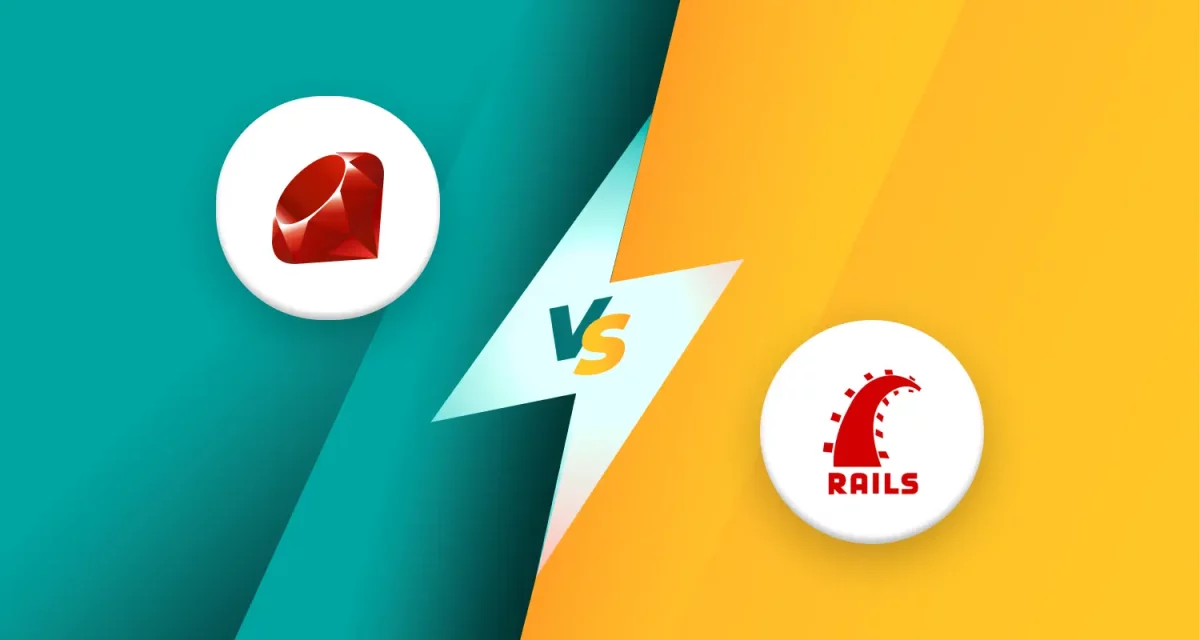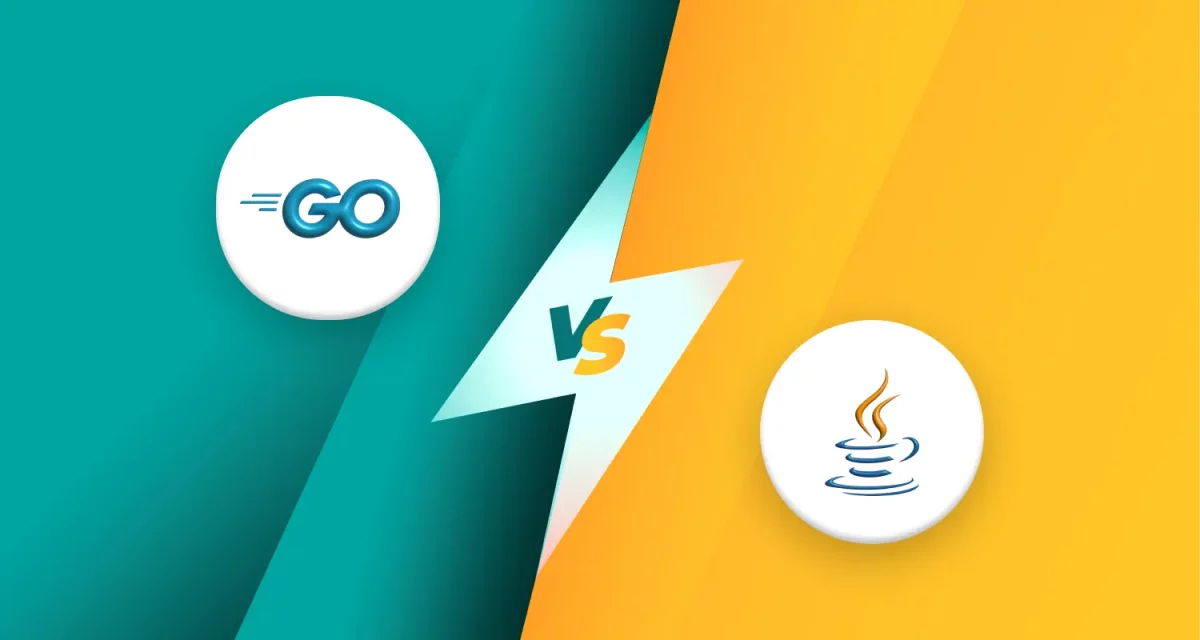
Programming paradigms guide us in how we write and structure code. ” Code—procedural focuses on step-by-step instructions, functional relies on pure functions, while object-oriented programming (OOP) models real-world entities through “objects” that combine data and behaviour.
To answer what an object-oriented programming language is, it’s a language that supports OOP principles like encapsulation, inheritance, and polymorphism, allowing developers to build modular, scalable, and reusable code. This makes OOP a dominant force in modern development, widely used in web, mobile, and enterprise applications.
1. What is an object-oriented programming language?
In simple terms, it’s a high-level programming language designed to support the fundamental principles of Object-Oriented Programming—namely, encapsulation, inheritance, polymorphism, and abstraction. These languages enable developers to build software by creating and interacting with “objects,” which are self-contained units that bundle both data (attributes) and functions (methods) that operate on that data.

At the heart of every OOP language is the concept of classes, which act as blueprints for creating objects. Key characteristics of OOP languages include the ability to define classes and instantiate objects, enforce access control through visibility modifiers (like public, private, or protected), and promote code reusability and organization through inheritance hierarchies.
Whether developing a mobile app, managing a complex enterprise system, or crafting interactive web applications, OOP languages provide a powerful and intuitive way to structure your code and scale your projects efficiently.
Read more >>> List of Object-Oriented Programming Languages: Features & Use Cases
2. Core concepts behind OOP
2.1. The Building Blocks of OOP: Encapsulation and Inheritance

Object-Oriented Programming (OOP) is built on four powerful core concepts that make the software more modular, maintainable, and closer to real-world modelling.
First, encapsulation involves bundling data and the methods that manipulate that data into a single unit called an object. This structure protects internal states by using access modifiers—like private, public, and protected—which control how data is accessed or modified. For instance, in a car class, the speed attribute might be private, and any change must go through a public method like acceleration, ensuring safe, intentional modifications.
Next is inheritance, which allows a class (called a subclass) to inherit attributes and behaviours from another class (called a superclass). This mechanism promotes code reuse and hierarchical organisation. For example, a SportsCar class can inherit from a general Car class, gaining methods like StartEngine while adding unique features like spoiler type.
2.2. Polymorphism: One Interface, Many Behaviors
Then we have polymorphism, which enables objects of different classes to respond differently to the same method call. It comes in two primary forms: compile-time polymorphism (also known as method overloading), where multiple methods share a name but differ in parameters—like a Calculator class having add(int a, int b) and add(double a, double b); and run-time polymorphism (method overriding), where a subclass provides a specific implementation of a method already defined in its superclass. For instance, Animal and Dog might have a makeSound method, but the Dog class overrides it to return a bark.
2.3. Abstraction: Simplifying Complexity

Finally, abstraction is about hiding unnecessary implementation details and showing only the essential features. This is achieved through abstract classes and interfaces that define a “contract” for what a class must do without dictating how it’s done. For example, a Shape interface may declare a method calculateArea, which is then implemented differently by concrete classes like Circle and Rectangle, sparing the user from worrying about the underlying math.
Together, these four principles form the backbone of OOP, allowing developers to write cleaner, smarter, and more adaptable code.
3. How Object-oriented programming changed modern software development?
Object-oriented programming has fundamentally reshaped how we build software by making it more reusable, scalable, and realistic in design. Through inheritance and object composition, OOP promotes reusability—allowing developers to extend or repurpose existing code without reinventing the wheel. Its modular structure also makes scaling easier: new features can be added as objects or classes with minimal impact on the existing system.
Encapsulation and abstraction play a key role in maintainability by isolating changes and reducing code interdependencies, making software easier to debug, update, or expand over time. Most importantly, OOP helps mirror the real world—developers can model entities like Users, Orders, or Vehicles with intuitive attributes and behaviours, making it easier to understand problems and craft elegant, real-world-inspired solutions.
4. Why Use Object-Oriented Programming?
Object-Oriented Programming (OOP) isn’t just a trendy approach—it’s a game-changer for building robust, scalable, and intuitive software. One of its biggest strengths lies in code reusability and modularity. Developers can avoid rewriting the same logic across multiple places through inheritance and object composition. Encapsulation further allows each part of the codebase to operate as a self-contained unit, making it easier to test, debug, and replace without affecting the system.

OOP also boosts maintainability and scalability. As applications grow in size and complexity, well-structured object-oriented code ensures that new features can be added without breaking existing functionality. Thanks to abstraction and encapsulation, developers can isolate changes, improve parts of the system independently, and collaborate more efficiently across teams.
Perhaps most importantly, OOP enables real-world modelling and intuitive problem-solving. Since everything is built around objects that mirror real-world entities and interactions, developers can design systems that are easier to understand and more aligned with how people think. This natural alignment streamlines development improves stakeholder collaboration, and empowers teams to solve complex problems with greater clarity and control.
5. Conclusion
To wrap it up, understanding what is an object oriented programming language is key to mastering modern software development. These languages revolve around the core principles of encapsulation, inheritance, polymorphism, and abstraction, helping developers write modular, reusable, and scalable code.




